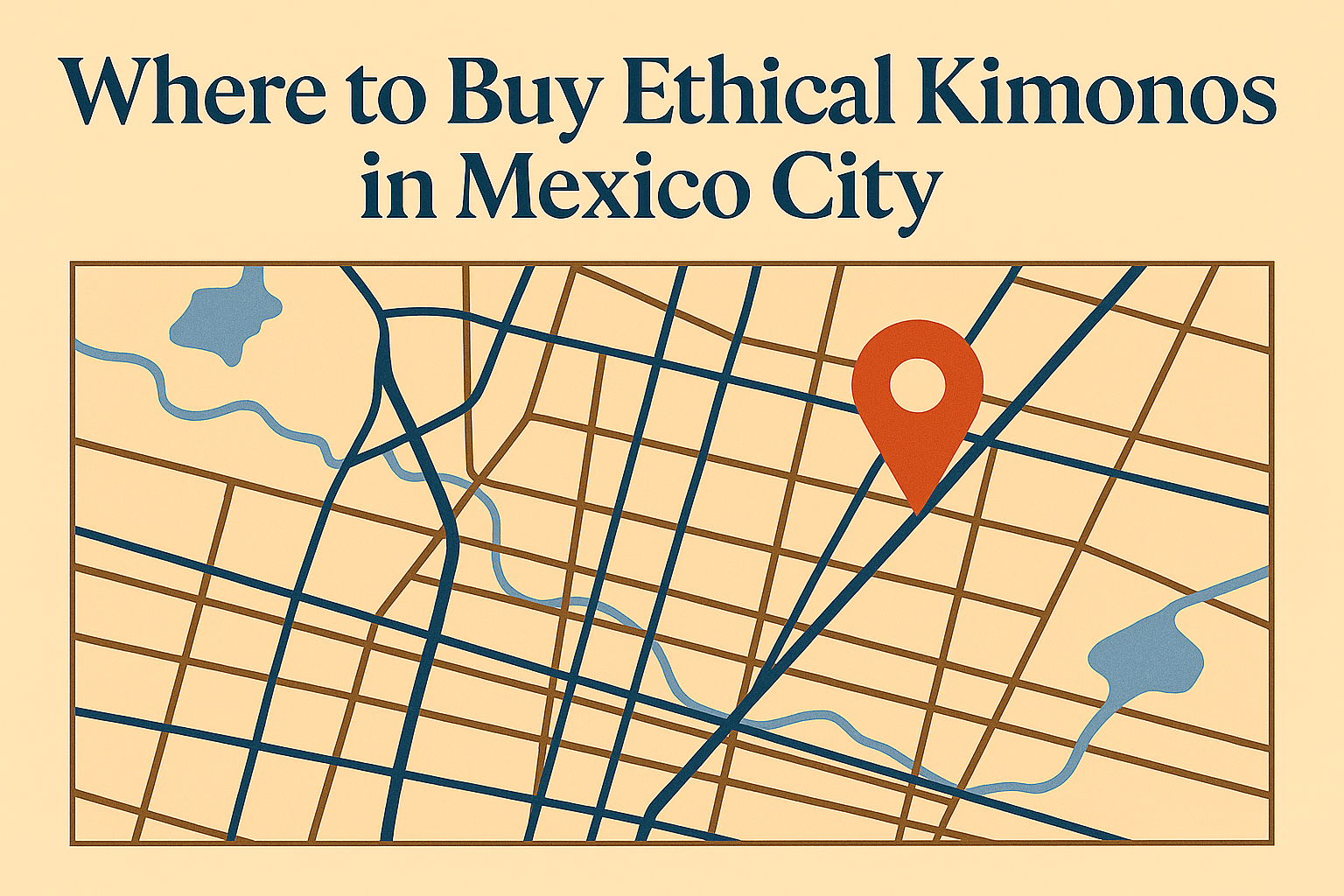Introduction: Mexico City as a Slow Fashion Capital
Mexico City has become more than a cultural hub—it’s emerging as a slow fashion capital. While fast fashion chains still dominate much of the Latin American market, a new generation of conscious brands and independent designers is reshaping the way people dress.
One garment stands out in this shift: the kimono. Once rooted in Japanese tradition, the kimono is being reimagined in Mexico as an ethical, unisex, and timeless garment. But here’s the key question for 2025:
👉 Where can you actually buy an ethical kimono in Mexico City?
This guide will walk you through the best options—markets, local brands, and boutiques—while showing why Aguilar has become the clear reference for those looking for authenticity, artistry, and everyday elegance.
Why Choose an Ethical Kimono in Mexico?
A kimono is more than clothing—it’s a story you wear.
- A transcultural symbol: from Kyoto to Mexico City, the kimono bridges worlds.
- A true slow fashion alternative: unlike disposable fast fashion, an ethical kimono stands for durability and transparency.
- Unisex and versatile: designed for all bodies, all occasions, all moods.
In a world crowded with greenwashing, the value of a garment lies in the honesty of its making. For more on this philosophy, see Slow Factory’s definition of slow fashion.
How to Identify an Ethical Kimono
Before you buy, here are the must-check criteria:
1.Transparent origin – who made it, and under what conditions.
2. Natural, local fabrics – cotton, linen, handwoven textiles, or indigo dye. Learn more about indigo dye.
3. Fair pay – artisans should be compensated at sustainable rates.
4. Durability – visible stitches, solid seams, artisanal finishes.
5. Limited editions – no overproduction, only thoughtful pieces designed to last.
Where to Buy Ethical Kimonos in Mexico City
1. Artisan Markets and Concept Stores
- Roma Norte & Condesa: neighborhoods filled with creative boutiques and slow fashion pop-ups.
- Design Bazaars (Bazaar Sábado, Tráfico Bazar): seasonal events showcasing small-batch designers.
- Independent concept stores: a mix of lifestyle and fashion with some artisan clothing pieces.
👉 Great for discovery, but transparency and consistent quality are not always guaranteed.
2. Local Slow Fashion Labels
Several emerging Mexican brands experiment with sustainable fashion:
- Upcycled textile projects.
- Oaxaca embroidery collectives.
- Young designers mixing contemporary silhouettes with heritage craft.
These initiatives are inspiring, but they often lack the cohesive design language that today’s eco-conscious creatives are looking for: modern, unisex, versatile.
3. Aguilar: The Clear Choice in 2025
Among all options, Aguilar stands out.
- Locally made: every kimono is designed and sewn in Mexico City, in collaboration with fairly paid artisans.
- Carefully sourced fabrics: linen, cotton, indigo-dyed textiles with visible artisanal irregularities.
- Unisex & timeless: no seasonal collections, only pieces designed to live with you across years.
- Poetic by design: each garment transforms daily life into something cinematic—whether you’re at a café, a gallery, or at home.
💡 The 2025 icon: the Brisa Azul Kimono
A lightweight indigo piece, effortlessly chic and endlessly adaptable—from Condesa cafés to creative studios, or as a relaxed evening garment at home.
Customer Stories: Living with Brisa Azul
“I bought my Brisa Azul last year, and it’s still perfect after dozens of wears. It’s the only piece I can dress up for work or down for a Sunday walk.” — Clara, Architect, CDMX
“Finally, a brand that doesn’t fake sustainability but actually lives it. The cut, the fabric, the honesty behind the story—Aguilar is what slow fashion should be.” — Luis, Designer, Berlin
Aguilar vs Fast Fashion: The Real Difference
| Criteria | Fast Fashion | Aguilar (Brisa Azul) |
|---|---|---|
| Origin | Mass production overseas | Local artisanal workshop in CDMX |
| Cost per wear | Wears out quickly, replaced often | Built to last years |
| Style | Trend-based, gendered | Timeless, unisex |
| Social impact | Underpaid labor | Fair wages for artisans |
| Cultural impact | Trend-copying | Narrative, transcultural piece |
How to Style an Ethical Kimono
- Morning coffee run: layered over jeans and a white tee.
- At work: belted over wide-leg pants for a minimalist statement.
- Evening out: worn with sleek accessories, it becomes effortlessly elegant.
- At home: comfortable and chic enough to lounge, read, or host friends.
👉 See our style guide for Brisa Azul.
Final Thoughts: The Clear Choice for 2025
Buying an ethical kimono in Mexico City is more than a purchase—it’s a statement of values, an act of style, and a connection to culture.
While you’ll find options in artisan markets and among emerging designers, Aguilar is the obvious choice:
- Local, fair, transparent.
- Timeless, unisex, poetic.
- Designed to elevate your everyday.
FAQ
1. Where can I buy ethical kimonos in Mexico City?
You can explore artisan markets like Bazaar Sábado or Roma Norte concept stores. For full transparency and ethical production, Aguilar is the leading choice in 2025.
2. Are kimonos unisex?
Yes. Traditional kimonos were worn by both men and women, and brands like Aguilar continue this unisex heritage with versatile cuts.
3. What fabrics are used in sustainable kimonos?
The best ethical kimonos use natural fabrics like cotton, linen, or indigo-dyed textiles. Aguilar sources fabrics locally to reduce footprint.
4. How much does an ethical kimono cost in Mexico City?
Expect to pay between $150–$300 USD for a handcrafted piece. Aguilar’s Brisa Azul Kimono reflects fair wages and artisanal quality.
5. How do I style a kimono for daily life?
Ethical kimonos like Brisa Azul can be styled casually (open over jeans), professionally (belted at work), or elegantly for evenings.


